They’re seemingly happening more and more. Where once it would have been every decade, now it seems to be every year. I am, of course, talking about heatwaves.
Though the mountains don’t generally see the high temperatures of southern England, they do bake in their own way, and in their own juices. This is both life-affirming and life-threatening for us walkers. As always in the mountains, successfully enjoying such conditions is a case of finding the way.
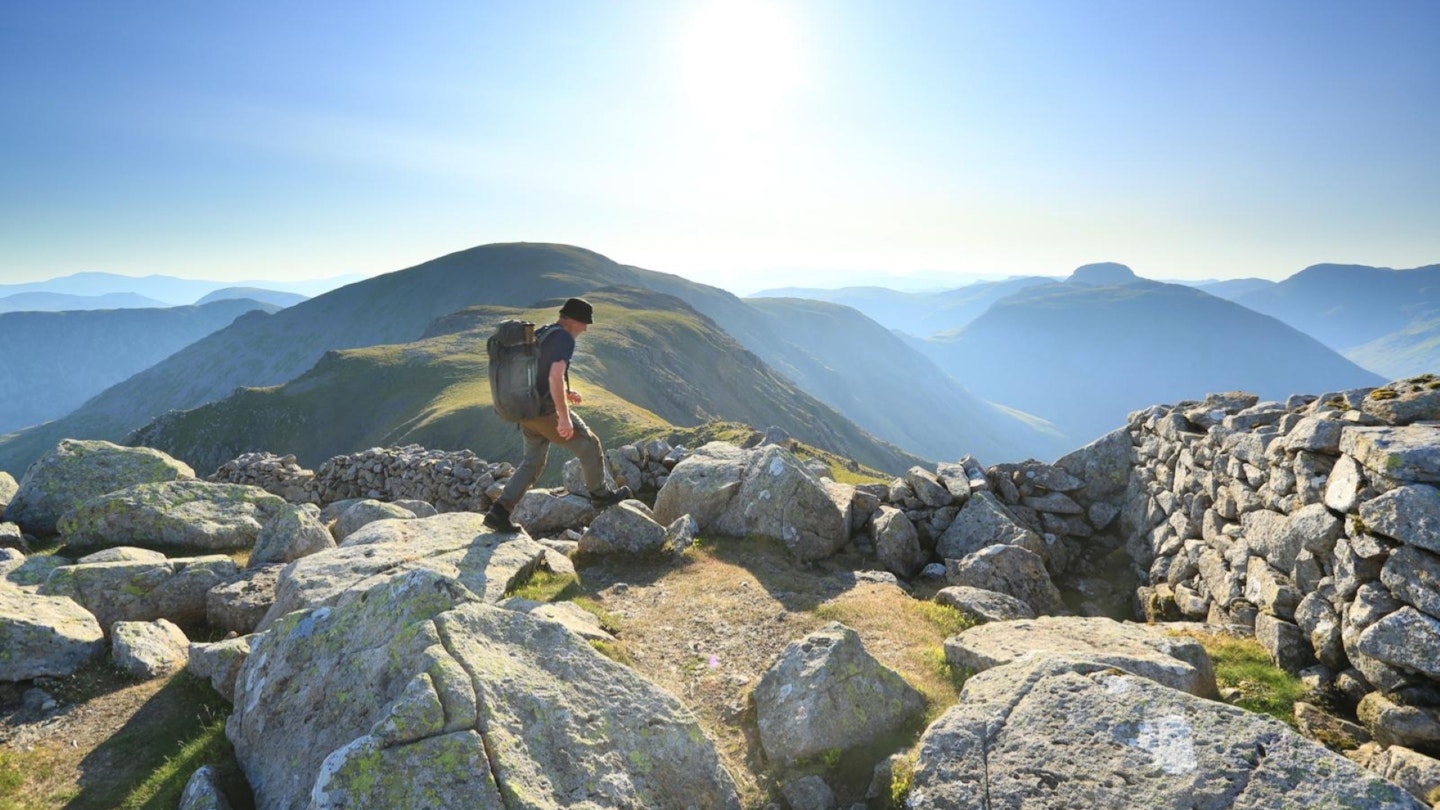
So there I was, June in the western Lake District and things couldn’t look greener if they tried. Yet the verdant lushness of the Ennerdale valley seemed to be evaporating before my eyes, as the sun was beating down with an unrelenting ferocity, intent on reclaiming every drop of moisture from the scene.
I stood on the top of Angler’s Crag, on the south shore of Ennerdale Water. It was about 5.30pm. I’d intentionally started my walk from the car park at the western end of the lake about 30 minutes before. Already I felt drained, leaden, apathetic, drugged.
Otherwise known as hot and bothered. I set out late because daytime temperatures were forecast to be in the high twenties, way too hot for me to be up in the fells.
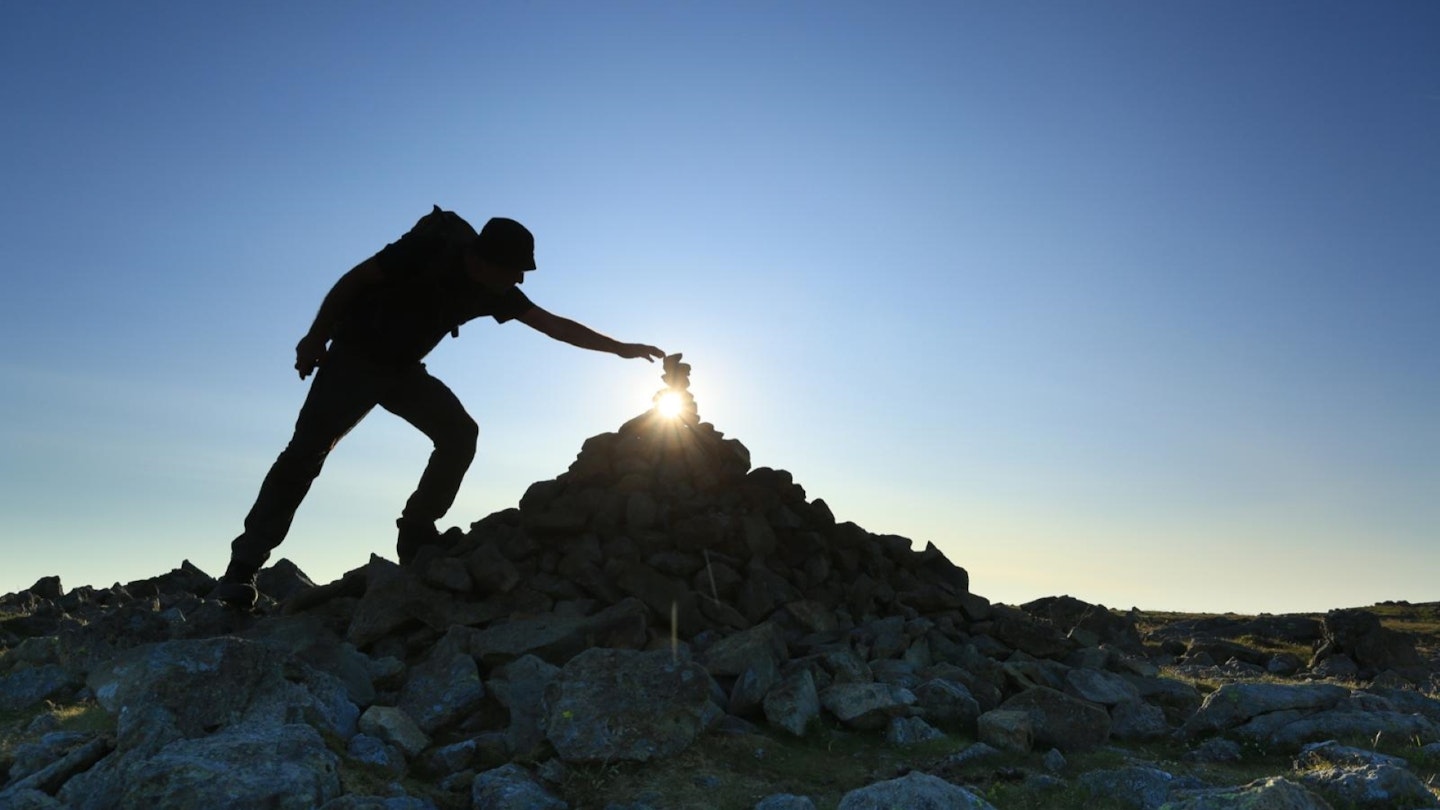
So, instead of staying home within easy reach of cool beers in the fridge, I decided to find a way to grasp what precious moments really hot weather in the mountains had to offer.
As I stood atop that promontory above the blue sea of Ennerdale Water, the sweat refusing to stop pouring out of me, I heard the air rumble. It would seem even the sky can have a little too much of the sun, and that rumble was surely its temper starting to fray.
Forces at play
But the rumble turned into a roar as a pair of F-35 jets laconically pushed through the treacly air of the heatwave (see below). No matter how hard they tried, the sun was still the most ferocious thing in the sky.
As the jets headed out west, pulling up ever higher, becoming lost in the sun’s glare, the wax in their wings seemed to melt away, revealing the myth of superpowers in the face of natural forces.
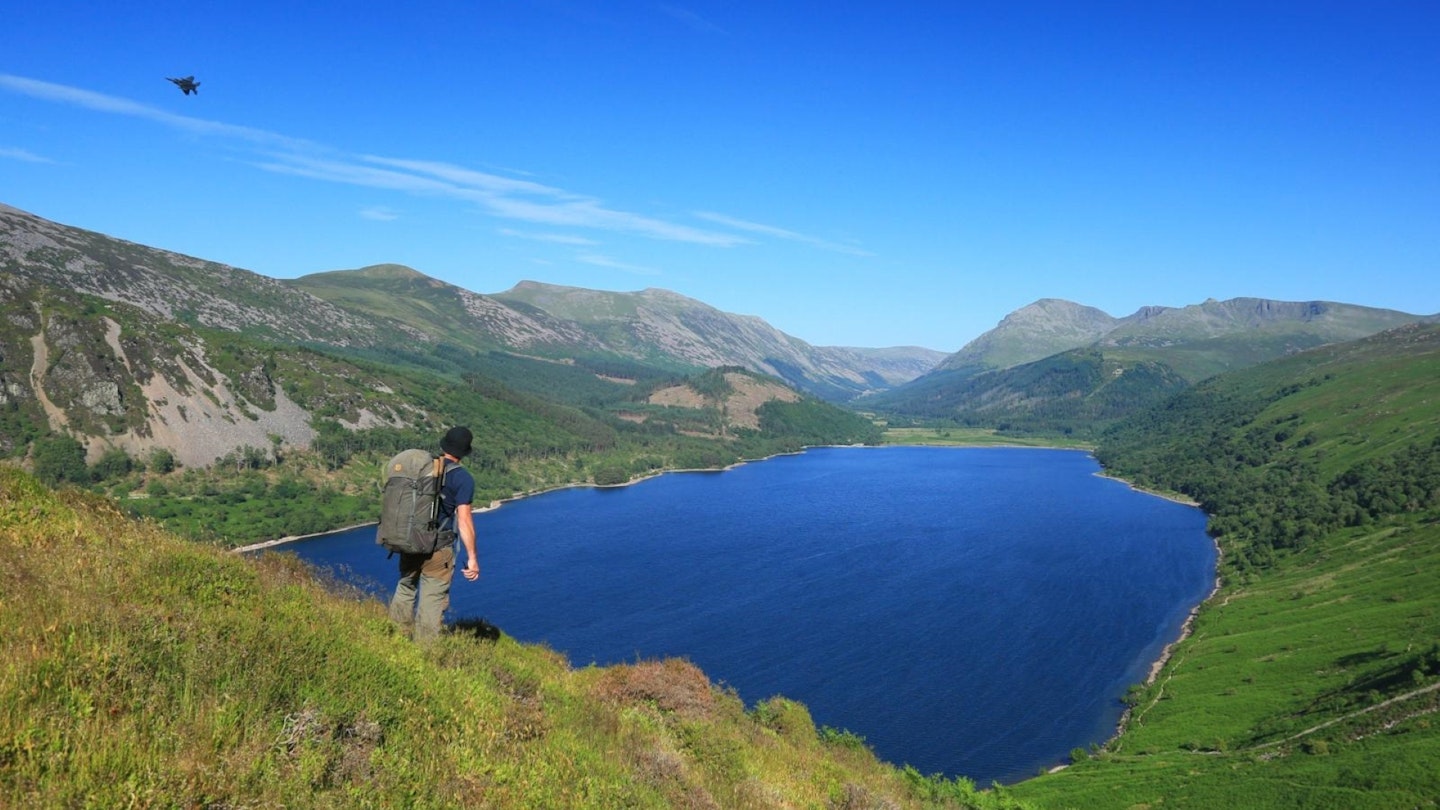
Yep, it was hot. Too hot for noisy planes to be interesting.
My plan was childishly simple; start out late as the sun starts to lower in the sky and cool its boots, walk right up until darkness (and at this time of year it comes late), pitch a tent up high, set an early alarm, then walk the lofty mountains before walking back out as the morning began to get grumpy again with its lack of patience for the Mediterranean weather. There were, of course, nuances that coloured in the picture, but I’ll get to them…
When does hot weather become a heatwave?
What is a heatwave? Well, it’s funny you should ask as I’ve only just looked it up. There’s a Heatwave Threshold Daily Maximum Temperature map of Britain that’s been divided up into various colour-coded areas of temperature.
Mountains bake in their own way, and in their own juices
These temperatures are considered to be on the ‘warm’ side for those regions. Up here in the Lake District that’s a modest 25ºC.
For a heatwave to be declared, the daily temperature must be equivalent or hotter than the threshold limit for three consecutive days. Then, and only then, do you have a heatwave.
Keeping cool on the move
I intended to use Ennerdale Water as my handrail into the mountains. Being by the side of a huge lake was at least subliminally cooling. The deepness of the blue sky was mirrored by the water’s surface as I pushed along the path, which cut through bracken jungles.
If I was three inches high, I’d be luxuriating in the shade that those plants provided, but I’m not and I kept a beady eye on the copses of trees that I knew were coming, giving me temporary respite from the still sweltering sun.

I’d dressed appropriately: long trousers made from incredibly light fabric (I never wear shorts in the mountains for two good reasons – 1. ticks and 2. my legs should never be seen by another living soul).
I also had a super lightweight, quick-drying T-shirt; a cotton bucket hat to keep the sun off (I regularly dunked it in streams before placing it back on my head, the cotton material retaining the cooling liquid for longer than technical fabrics); loads of sunscreen; and a light, yet sturdy, pair of boots.

On my back I had my overnight stuff minus a stove. To save weight on such a short overnight walk, I figured I’d survive without a hot meal and a coffee in the morning.
My one essential bit of kit was my water filter; with this, I intended to safely replenish my water bottle at every opportunity.
It goes without saying I had warm layers, a compass, first aid kit – you name it, you still need it if you’re taking full responsibility for yourself in the mountains.
Slow and steady wins the race
I kept my pace deliberately slow so as not to boil up. The distance I was covering wasn’t huge, and in these kinds of conditions, a compromise is the way forward.
At last, I reached a belt of sessile oak trees that gave me shade until I was swallowed by the full-on, light-smothering plantation that laid ahead. From the coolness of my tree-covered lakeside position, I looked out over Ennerdale Water.
A faint breeze did its best to fan me, while the distant fells looked as if they were ready to return to a molten state. Would the sun never start its descent into night? I met few people this far out from the car park, this late in the day. They were all in pub gardens, downing liquid sunshine.

The plantation, which I knew from previous experience, didn’t necessarily have paths where they appeared on the map, so I took my sweet time navigating through it, checking my position time and again.
My target for a wild camp spot was up on Tewit How. My heatwave route planning meant that I was only out of the cover and cooling shade of the trees for the shortest possible distance and at a time when the sun was starting to weaken in strength.
I filled up with water before I left the tree line and set a steady, achievable pace. Sweat on a trip like this becomes a familiar part of you, like a second skin. It was as if I’d been gloss varnished.
Finding the perfect camping pitch
Once I gained enough height, I knew it had all been worth it. The view back down onto Ennerdale Water, with the sun adding a copper-gilt finish to the day, spoke for itself. I took the time to appreciate the moment because breaks were, after all, part of my hot-weather walking philosophy.
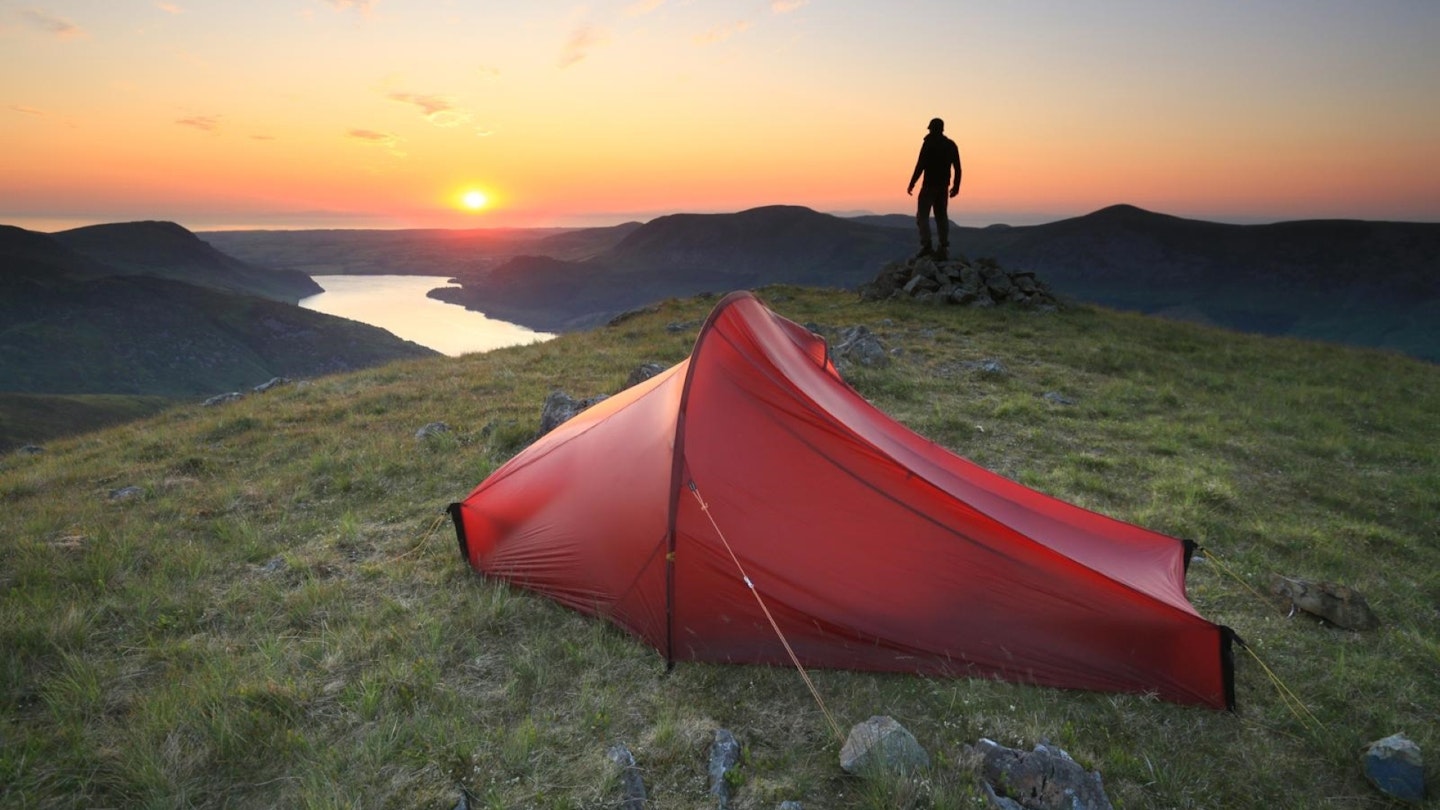
I found a spot to pitch my tent just before sunset. Remember, it was mid-June, and daylight hours were as generous as the winter is greedy. I stood for a while watching that vicious boiling orb of nuclear fusion (the Sun) as it looked back at me for the last time that day.
Its unblinking stare made me almost dread more of its fury the next day. But I knew that when I did see it rise, it would lack the heat of the afternoon, and I’d be taking full advantage of that fact. I slept in my salty, sweat-dried cocoon of exhaustion for a full five hours.
I never knew darkness; my eyes closed while the tent walls still glowed red, and I surfaced to the same low intensity of colour saturation. But I awoke on a mission. Drinking long and deep, I hydrated my body in preparation for a mission of a morning.
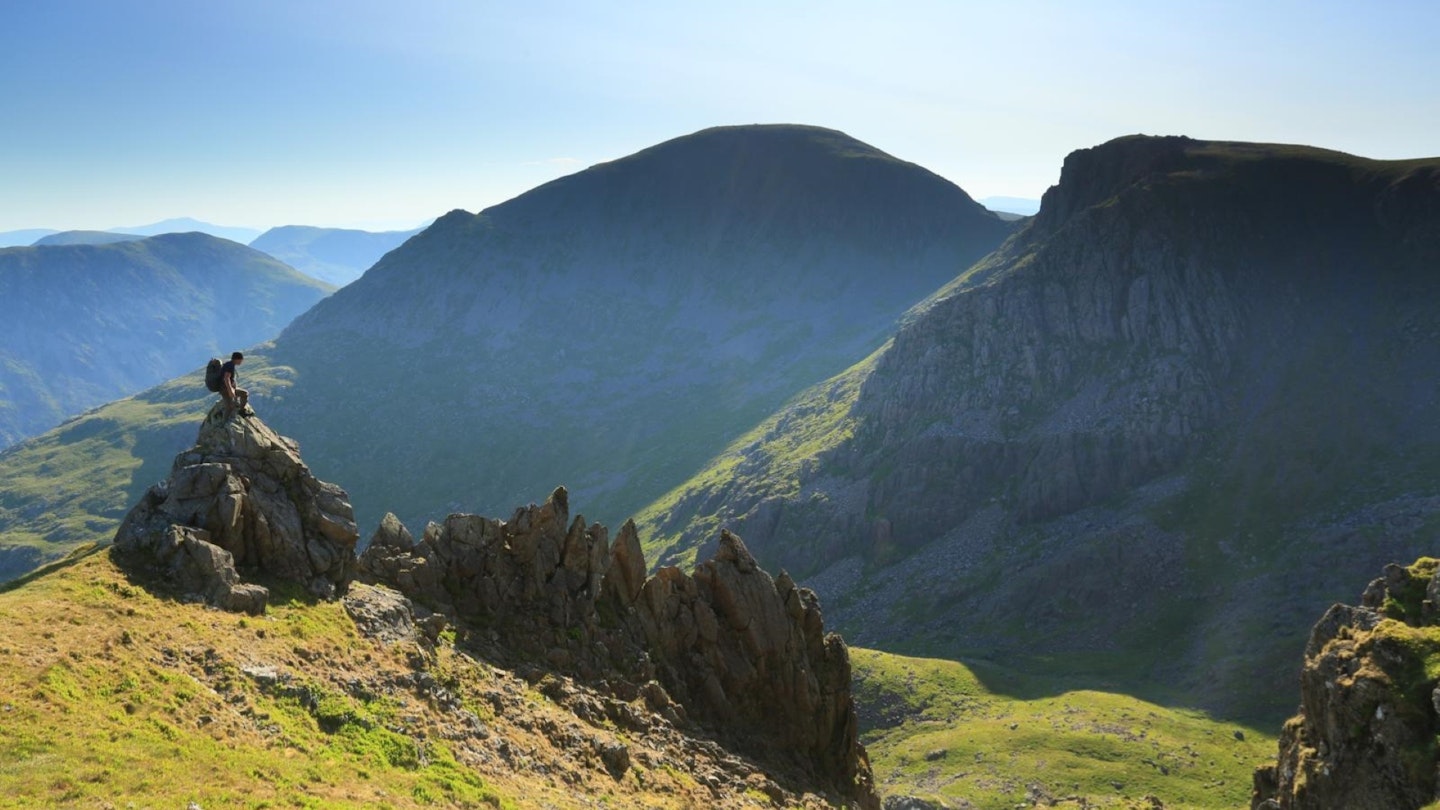
I was hoping to be back at the car by 11ish. When a stove is removed from the equation, camping becomes far slicker, and I was packed away and on the move within minutes of waking up. I like a coffee, but it was even too early for my favourite Colombian beans.
Those first beams of sunlight hit me at a low angle, creating vast pools of shadow in the valleys, but, dare I say it, I was glad of their golden warmth. It wouldn’t last… For probably not much more than a couple of hours I was up on the fell tops of Little and Great Scoat Fell and the mighty but tiny Steeple (below).

But it was more about being out there. It felt dangerous, as if I was on borrowed time. I’d half thought about pushing on to Pillar if things went well before returning.
But by 6am, it was hot, and I contented myself with views of Pillar and, in particular, the Scafell range sitting off to the south/east. They looked cool, drenched in steely blue early shadows, and the dome of Great Gable was even mirroring the shape of my bucket hat. Maybe mountains need to stay cool too?
Homeward bound
After enjoying Steeple to the max, I started my descent down its Long Crag ridge, which led me back to the cover of the plantation before I shriveled up in the heat like a slug stranded on a patio. I had quite a time getting through the plantation.
I hit a vast area that had been felled by one or more of the winter storms that batter our land with the same regularity as heatwaves. The going was almost impossible, but the events are a distraction to this narrative; I’ll save those for my nightmares.
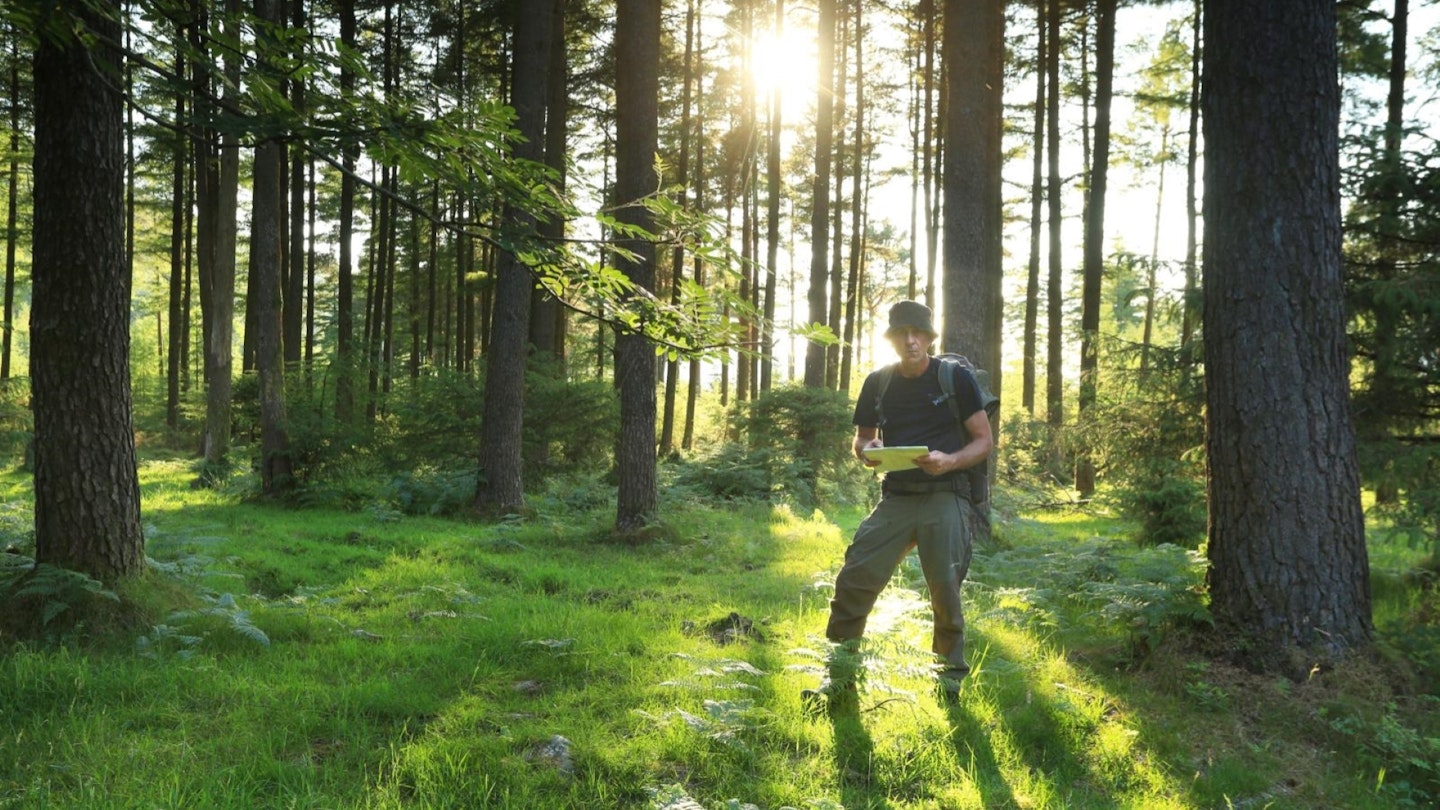
The walk back out west, up the Ennerdale Valley, became as hard as I feared. I was glad I hadn't been greedy for Pillar, as the growing heat of the morning made the going exhausting. I wore many coats of sweat and, as ever, I kept my pace steady, rested in the shadows of trees, and kept my water bottle topped up as I relentlessly drained it.
In conclusion... take heat seriously when hiking
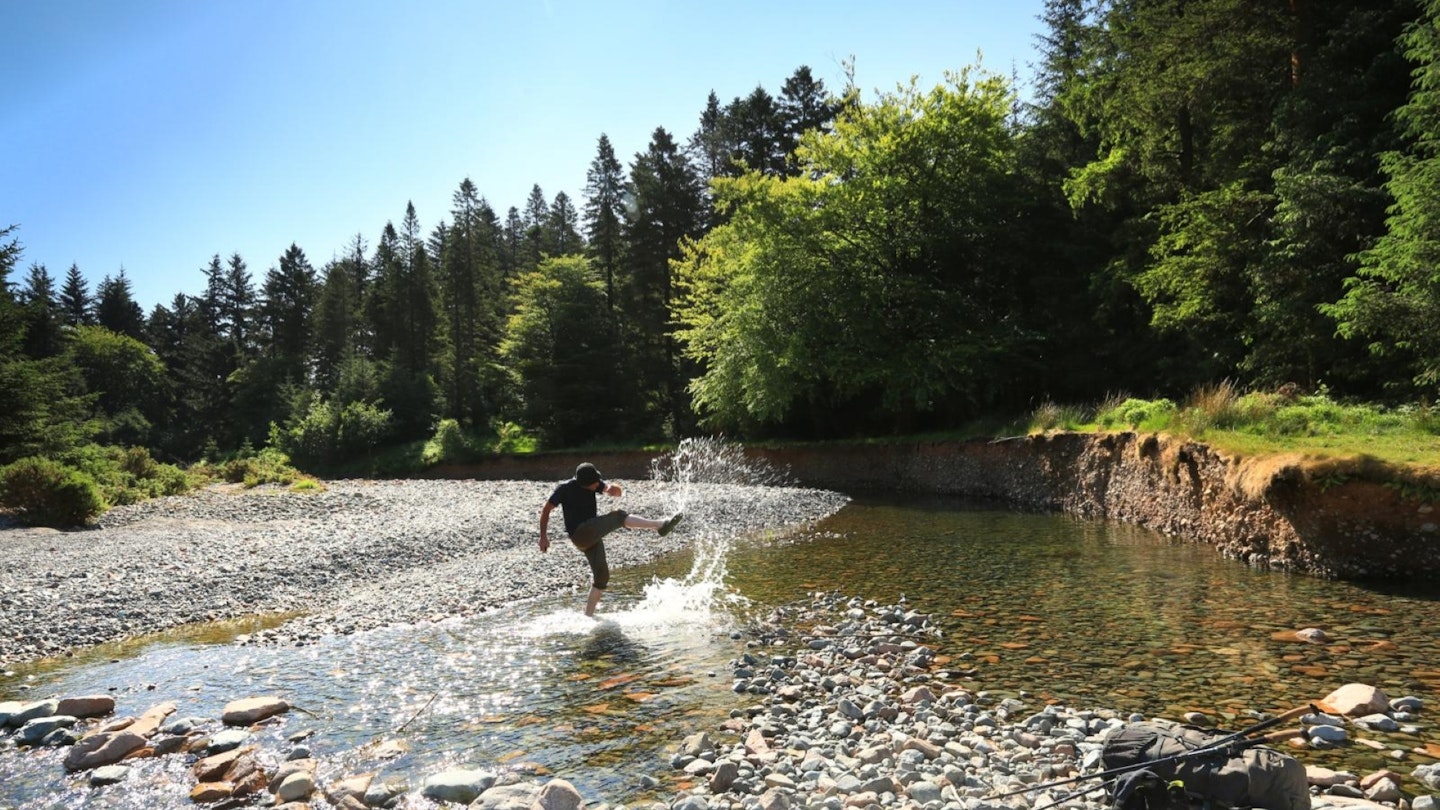
Heatstroke or heat exhaustion is no joke. Being out in the hills, away from shade and water while being physically active, is a recipe for disaster. Its effects can come on dangerously quickly.
Take the heat seriously. Plan for it. Enjoy it. But don’t expect to be able to beat it. When I reached my starting/finishing point, I’d been out on the hill, with a wild camp, for less than 18 hours, but it still felt like a lifetime.
The drive home with windows open wide, pushing the car through that same thickness of air that the jets had struggled through, made me glad it isn’t like this all the time. I even struggled to remember what the Lake District fells were like in the rain. Maybe I’d been out in the sun for too long!
About the author
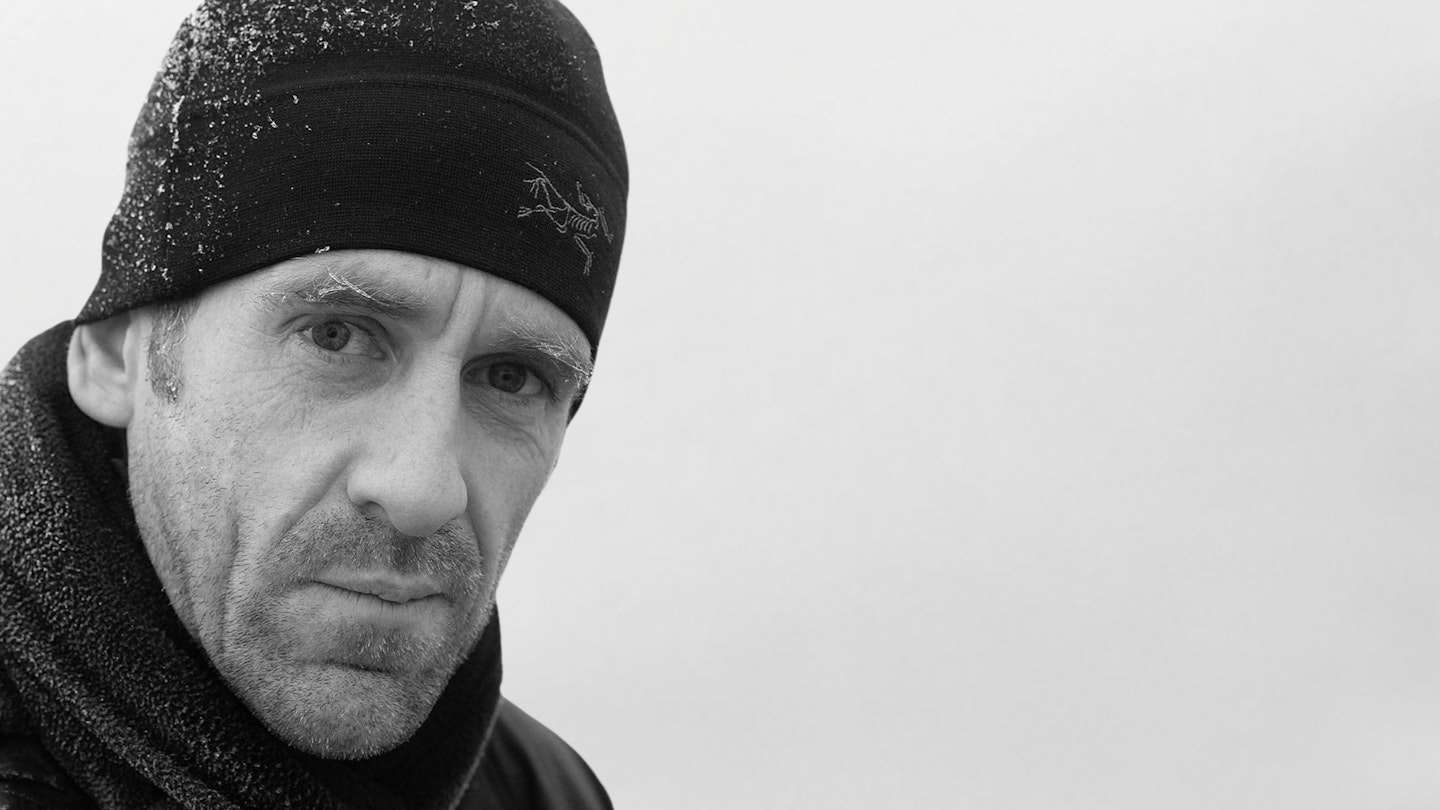
Tom Bailey has been Trail magazine’s photographer for more than 20 years and is one of the most experienced hillwalkers and wild campers in Britain. He’s climbed more mountains than most people could dream of and is an oracle of knowledge on everything from routes and gear to geology and nature.
